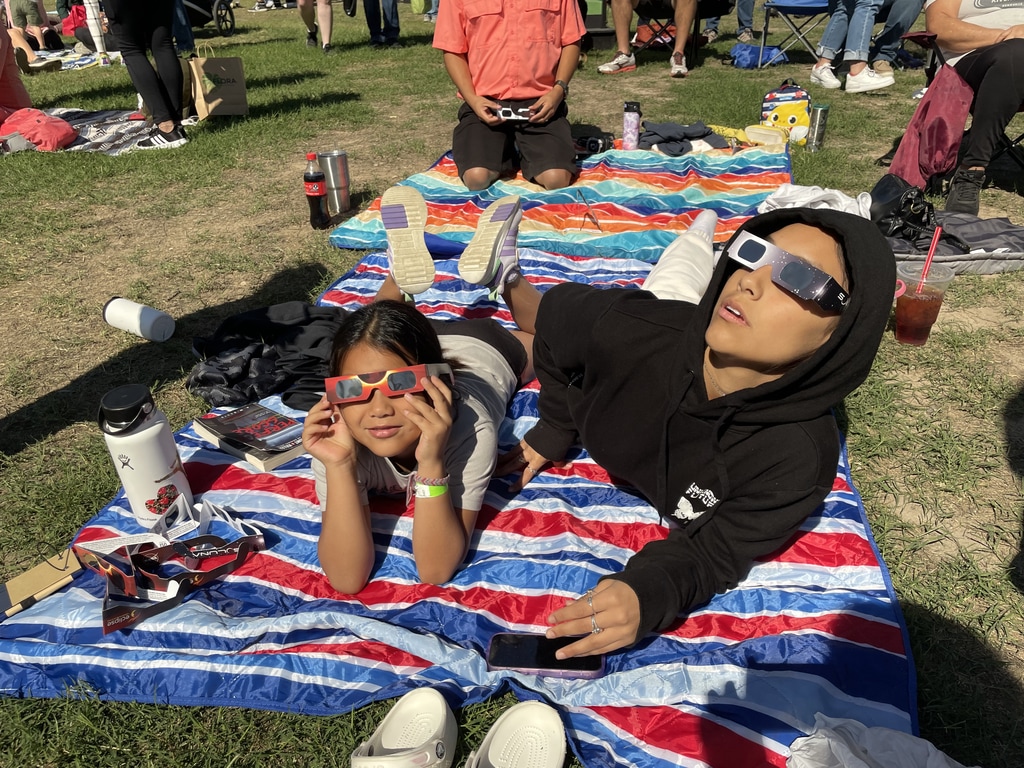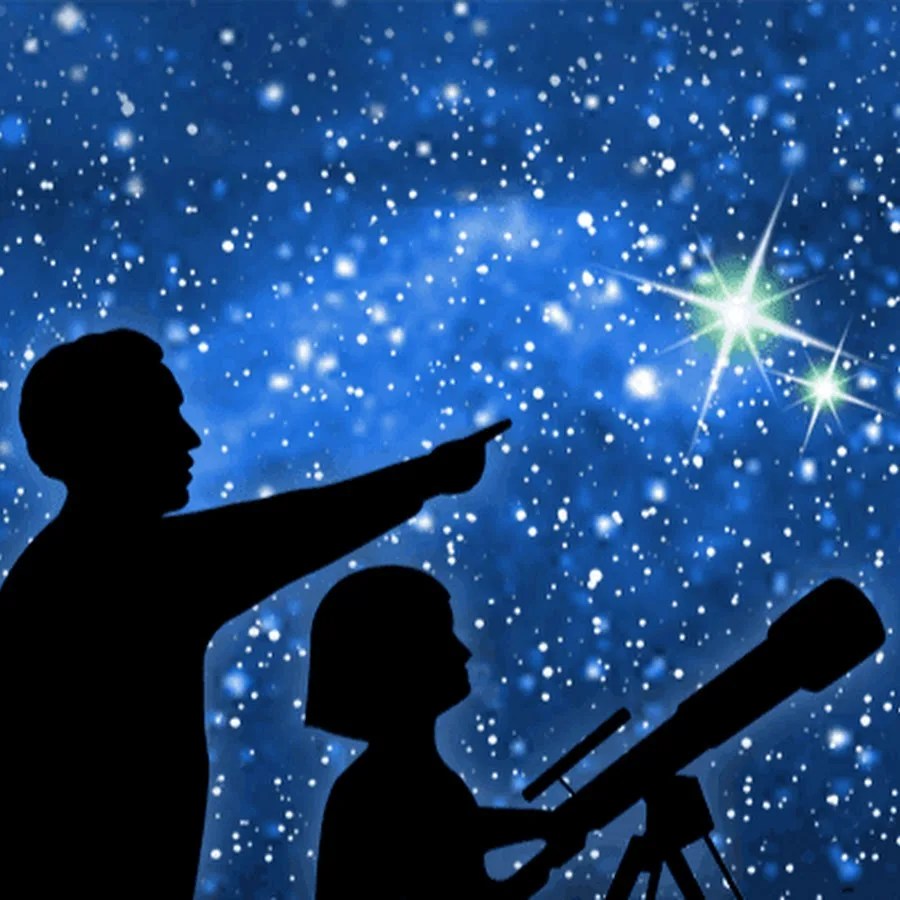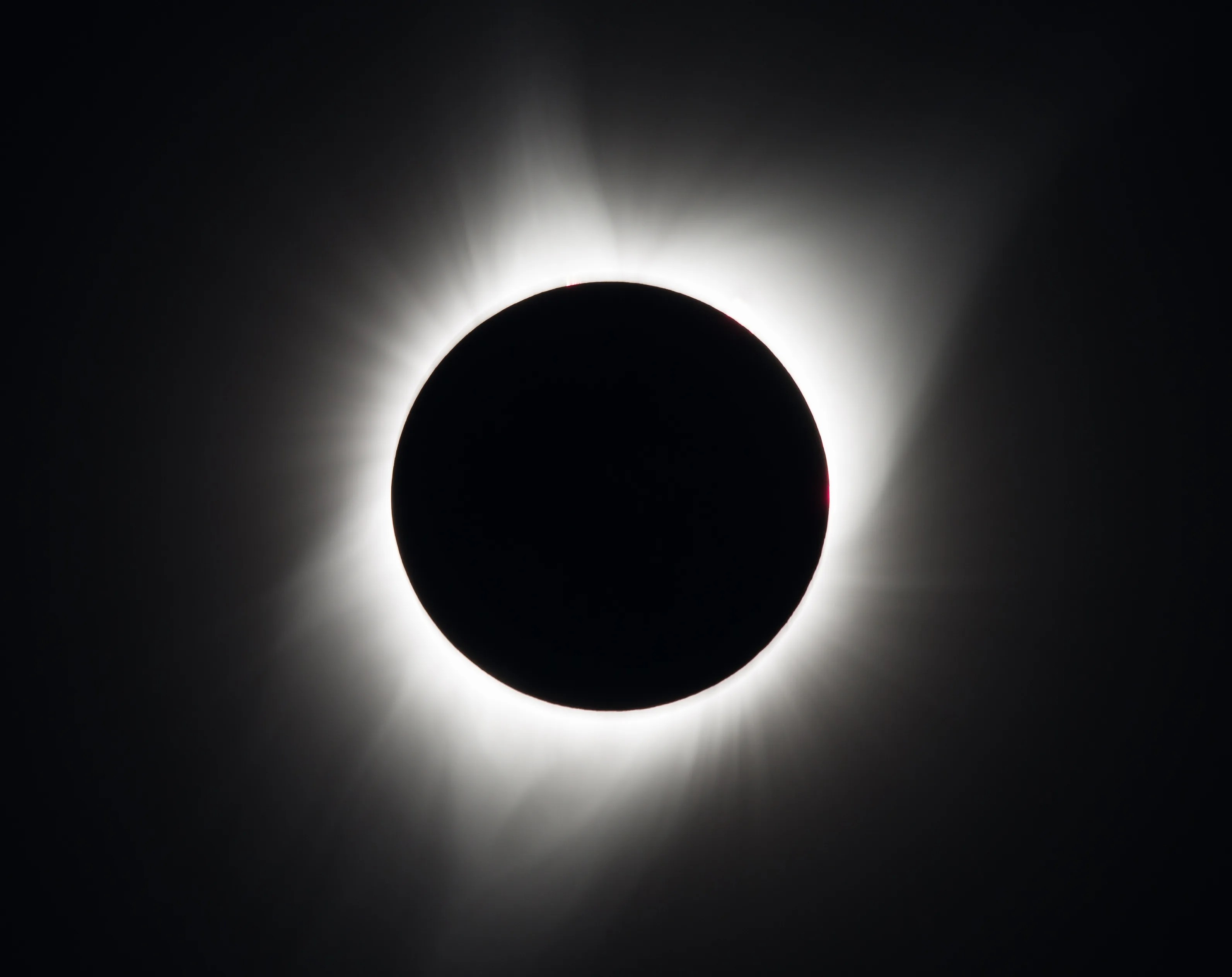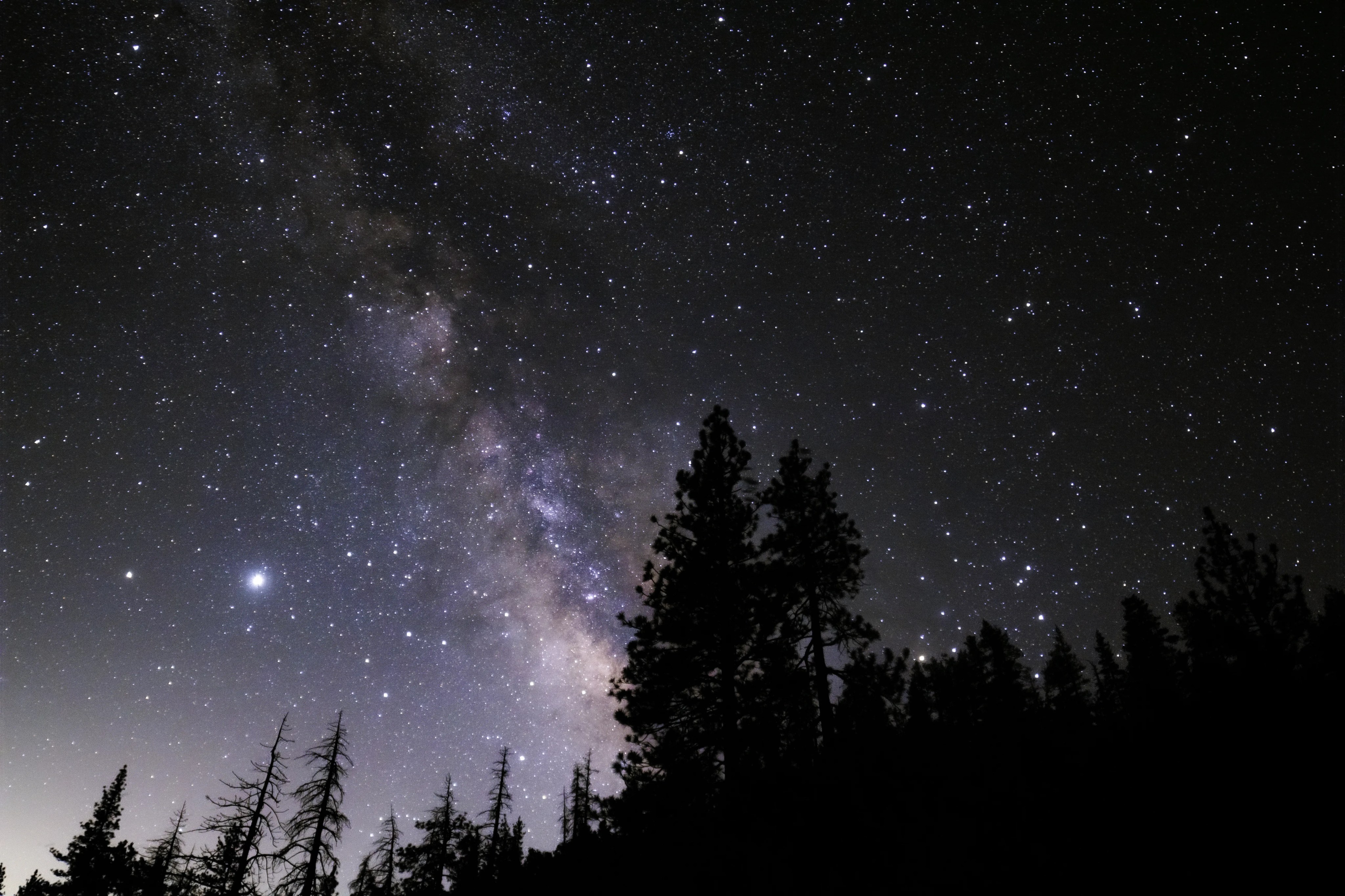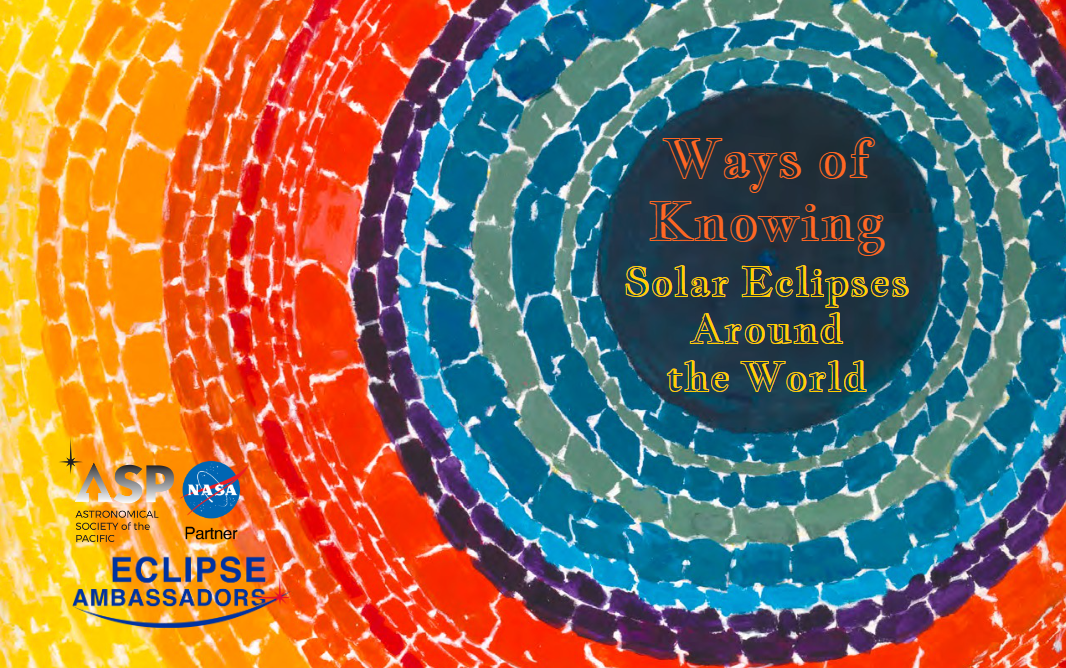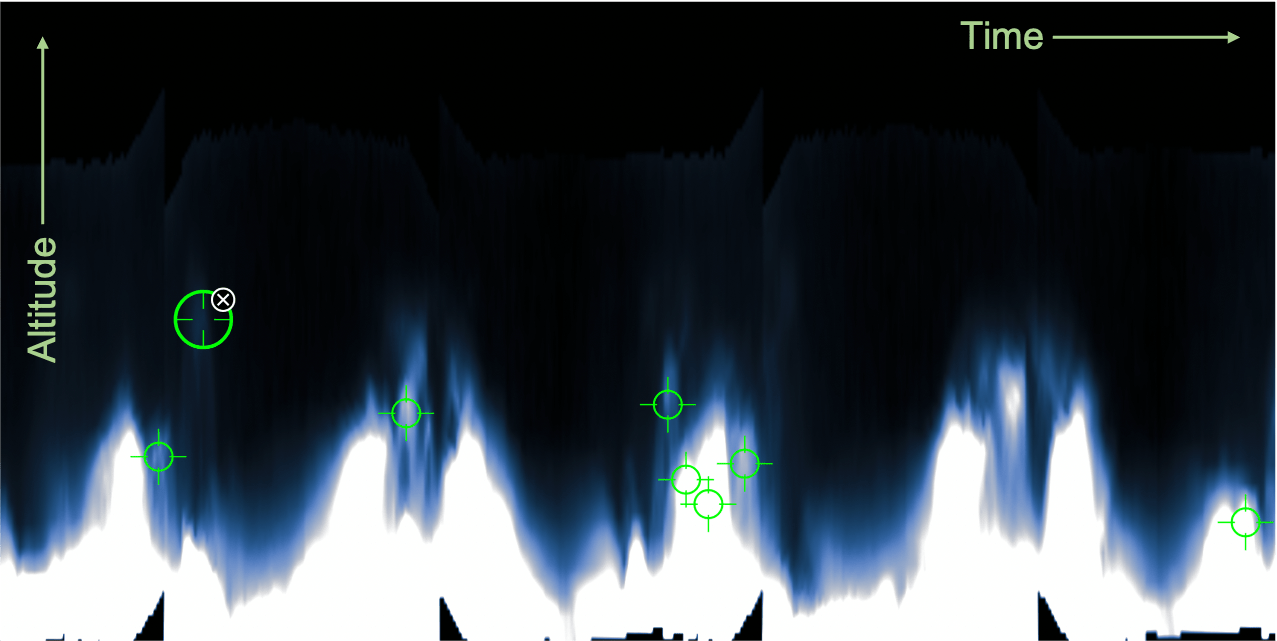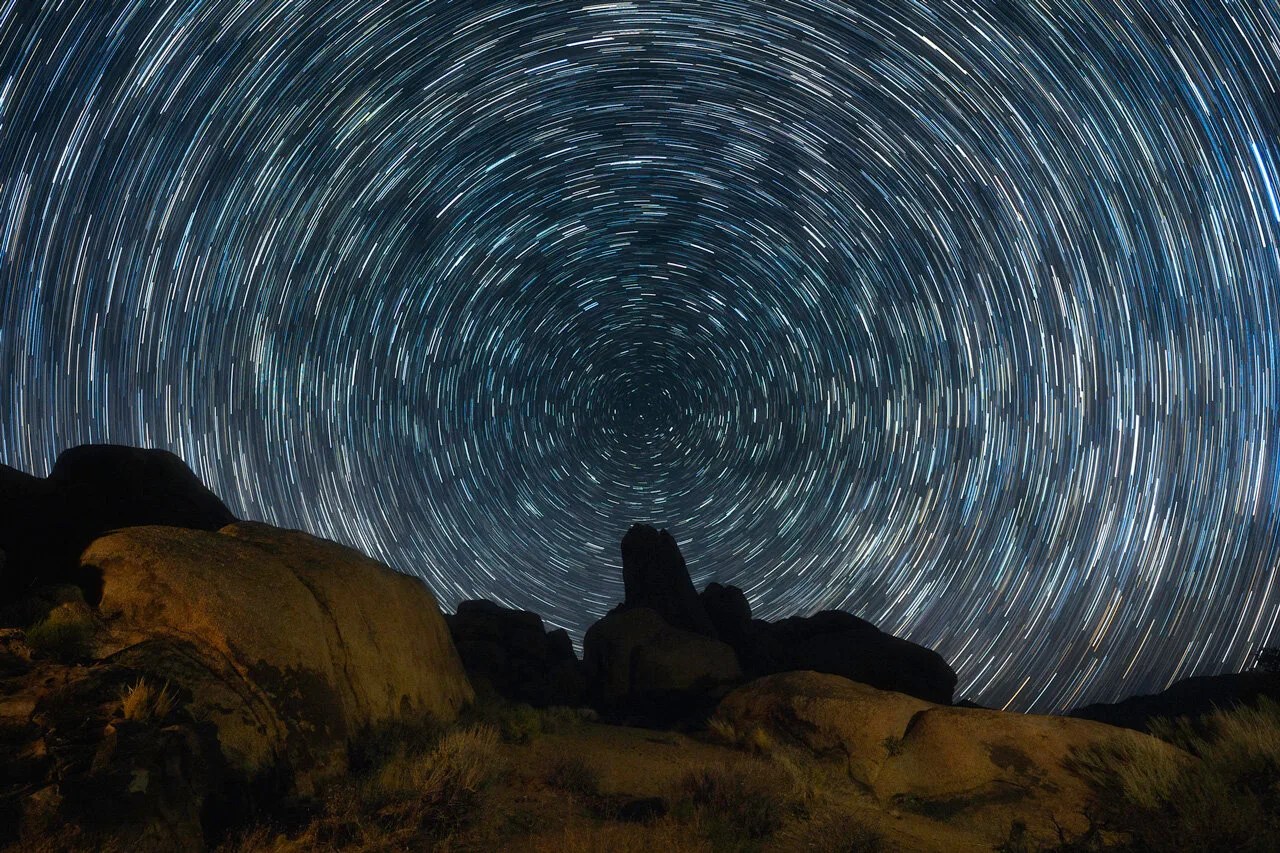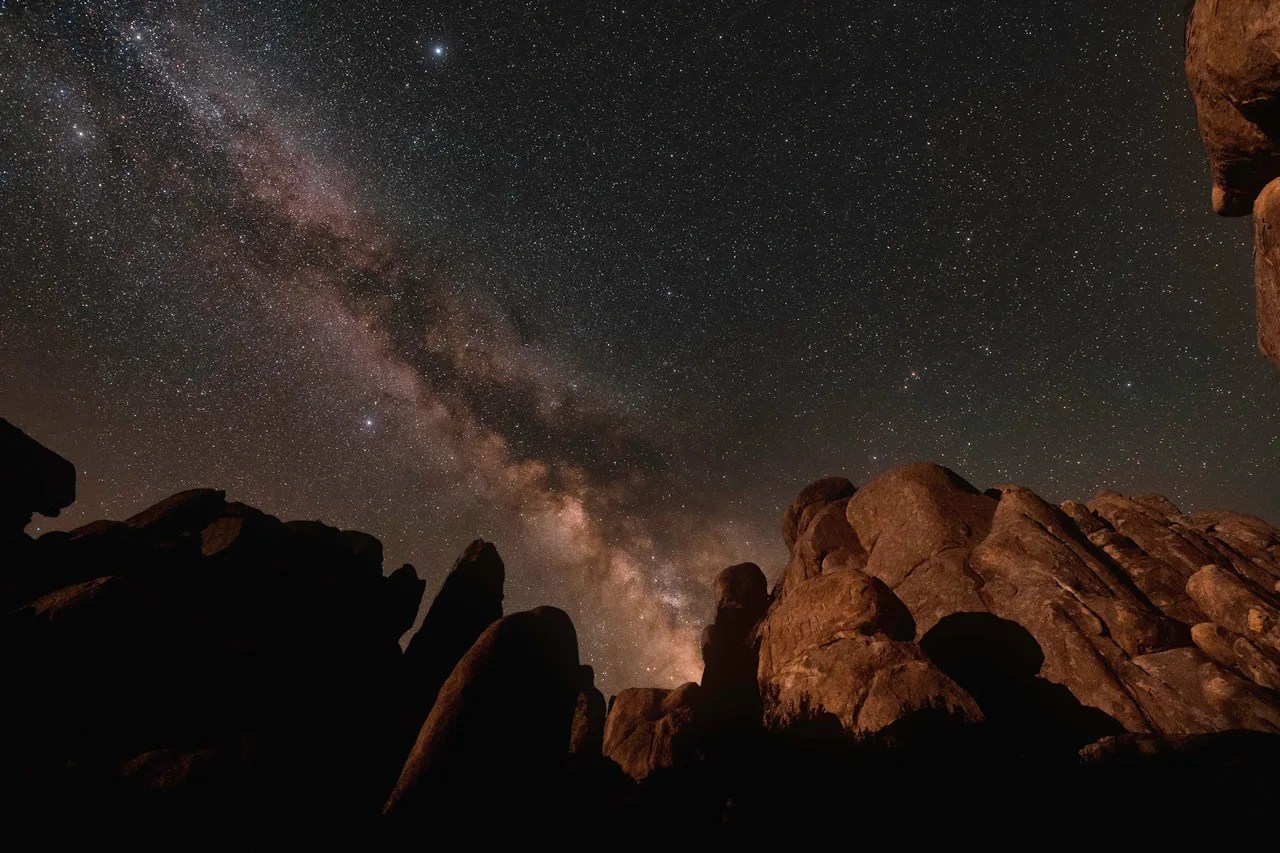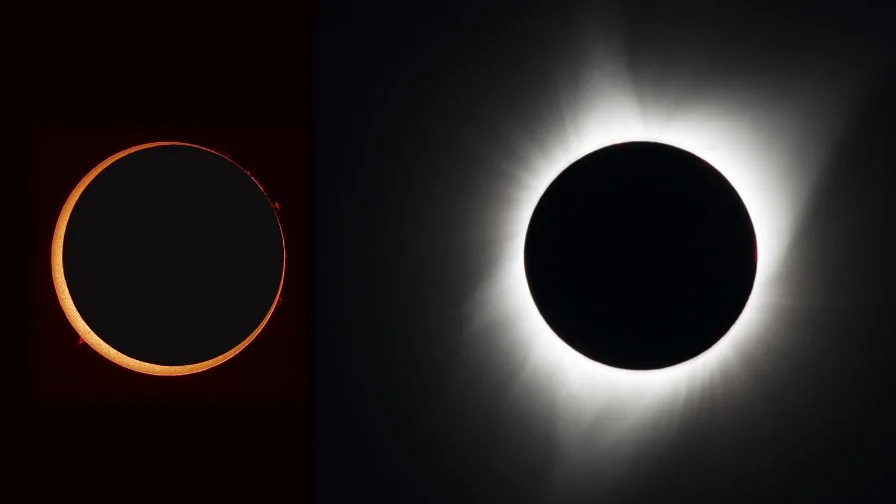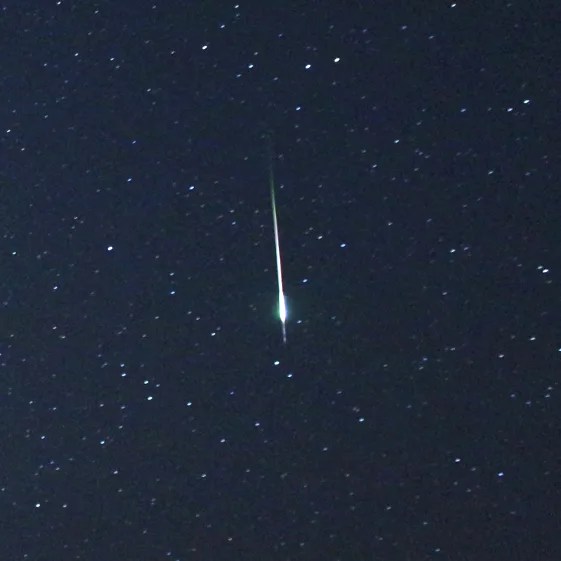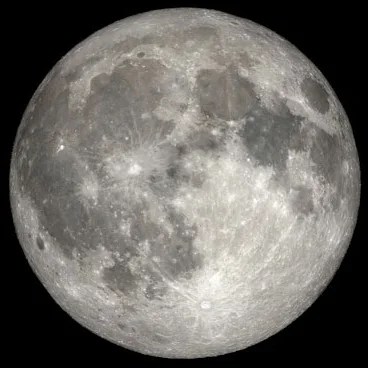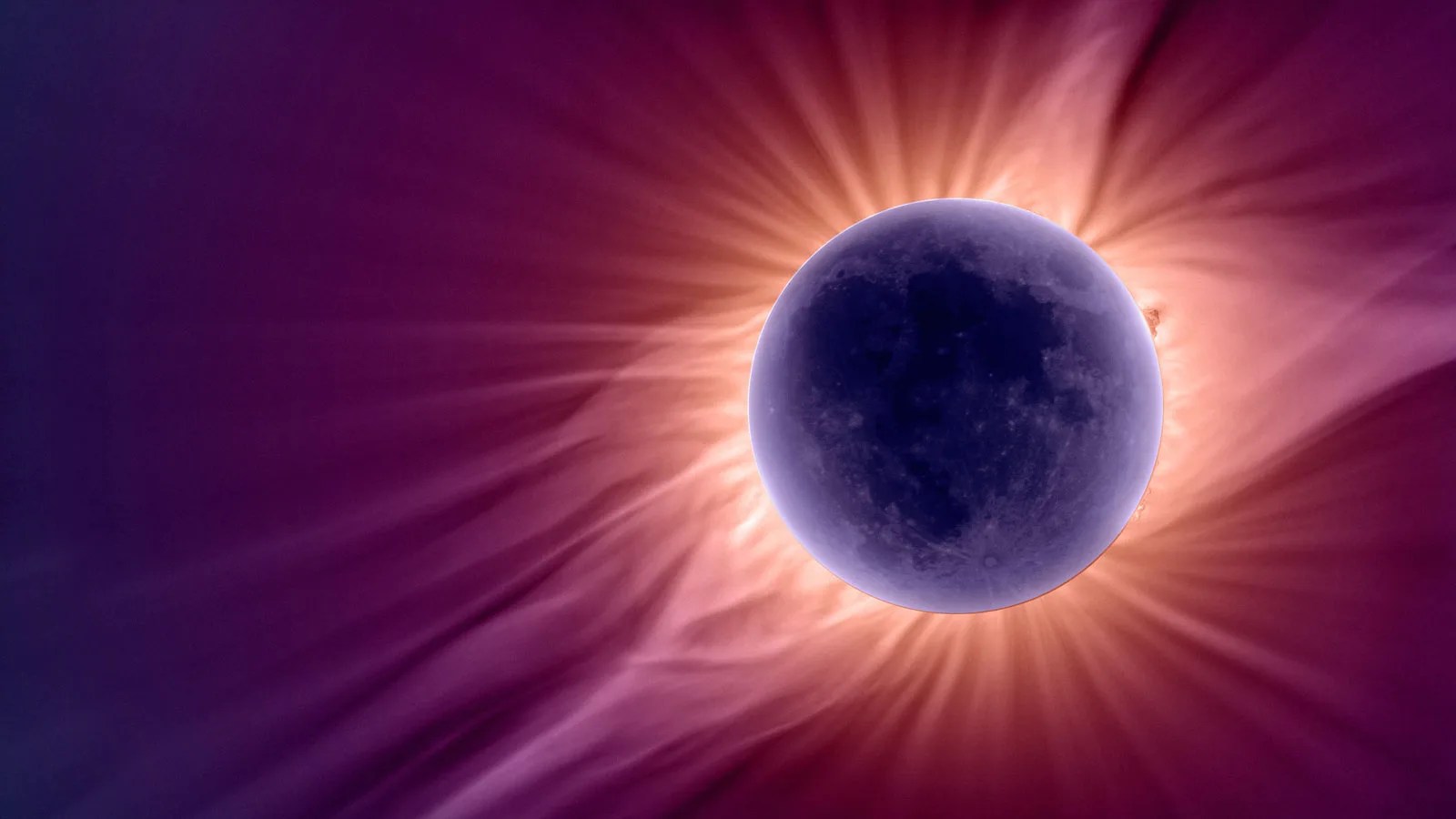People have always watched the skies. We know that early civilizations tracked the movements of the Sun, Moon, planets, and other objects because they recorded their observations with words and art. Even with our busy modern lives, the night sky is still a wonderful resource. Skywatching is an activity that allows anyone to make a connection with the larger world beyond our planet's atmosphere, just by looking up. Observing the slow, continuous movement of the stars above from night to night, and month to month, is a powerful way to experience the cycle of the seasons, as the same stars and constellations reappear each year at the same time.
Meanwhile, the five bright planets visible to the unaided eye – Mercury, Venus, Mars, Jupiter, and Saturn – are constantly on the move. Sometimes they appear in the morning, before dawn, and at other times they are visible in the evening sky following sunset. Occasionally they group together to form pairs, trios, or lineups across the sky. Add to that the occasional meteor shower, eclipse, or comet, and there are many thrills to seek out in your skywatching adventures.
These cosmic sights have fascinating stories to tell about our solar system and the universe beyond. There are tales of heroes and mythical creatures from cultures around the globe. Skywatching is also a great way to connect NASA's exploration of space with what you can see in the skies directly above.
NASA has lots of online resources to support your stargazing. Our Night Sky Network connects you to local and regional astronomy clubs and events. Our Eclipses hub has everything you need to know about the next big solar eclipses – including the 2024 total eclipse in the U.S. These, along with a host of articles, blogs, and FAQs, are provided to fuel your curiosity about the cosmos. Here's wishing you clear skies!
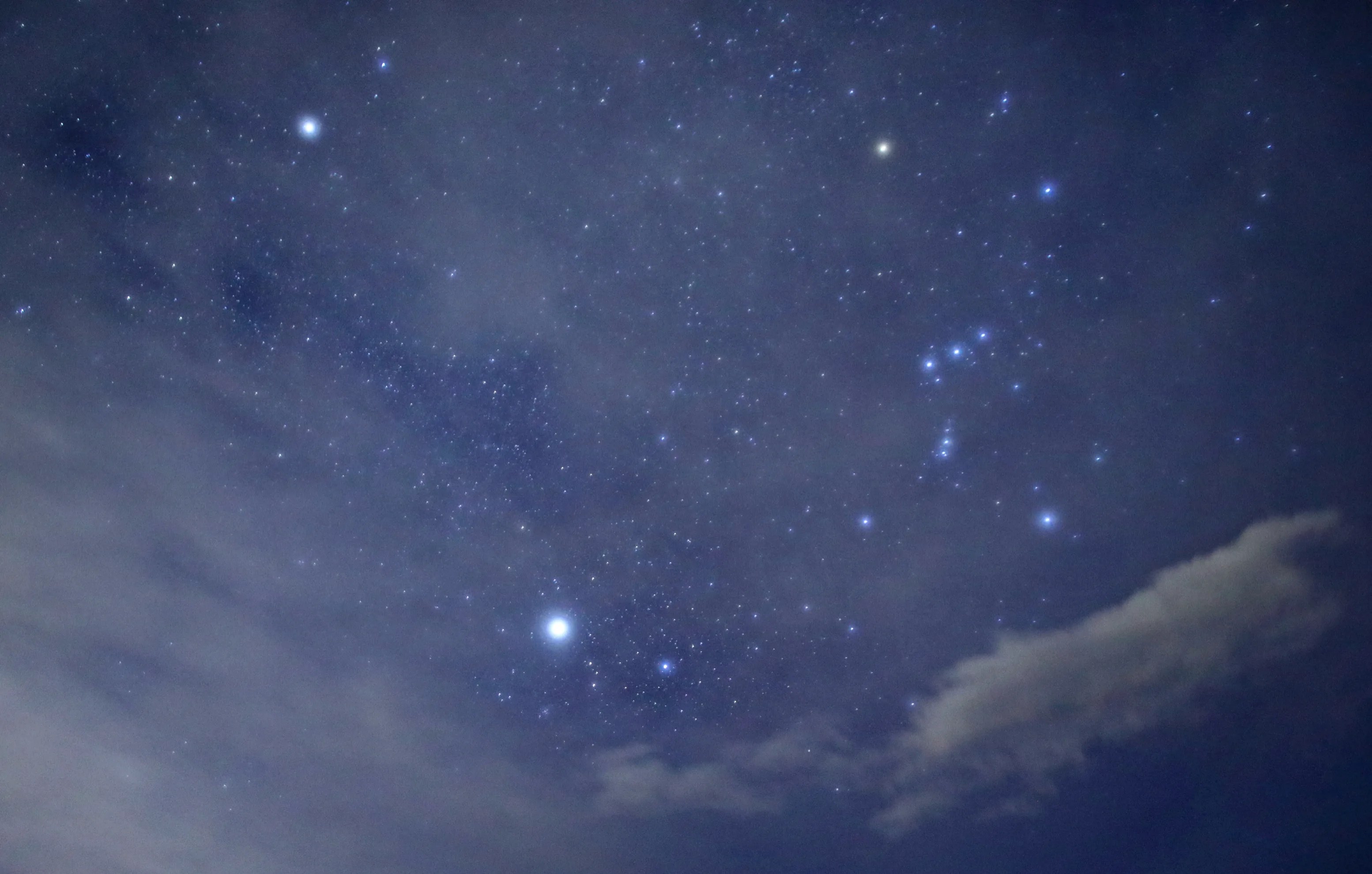
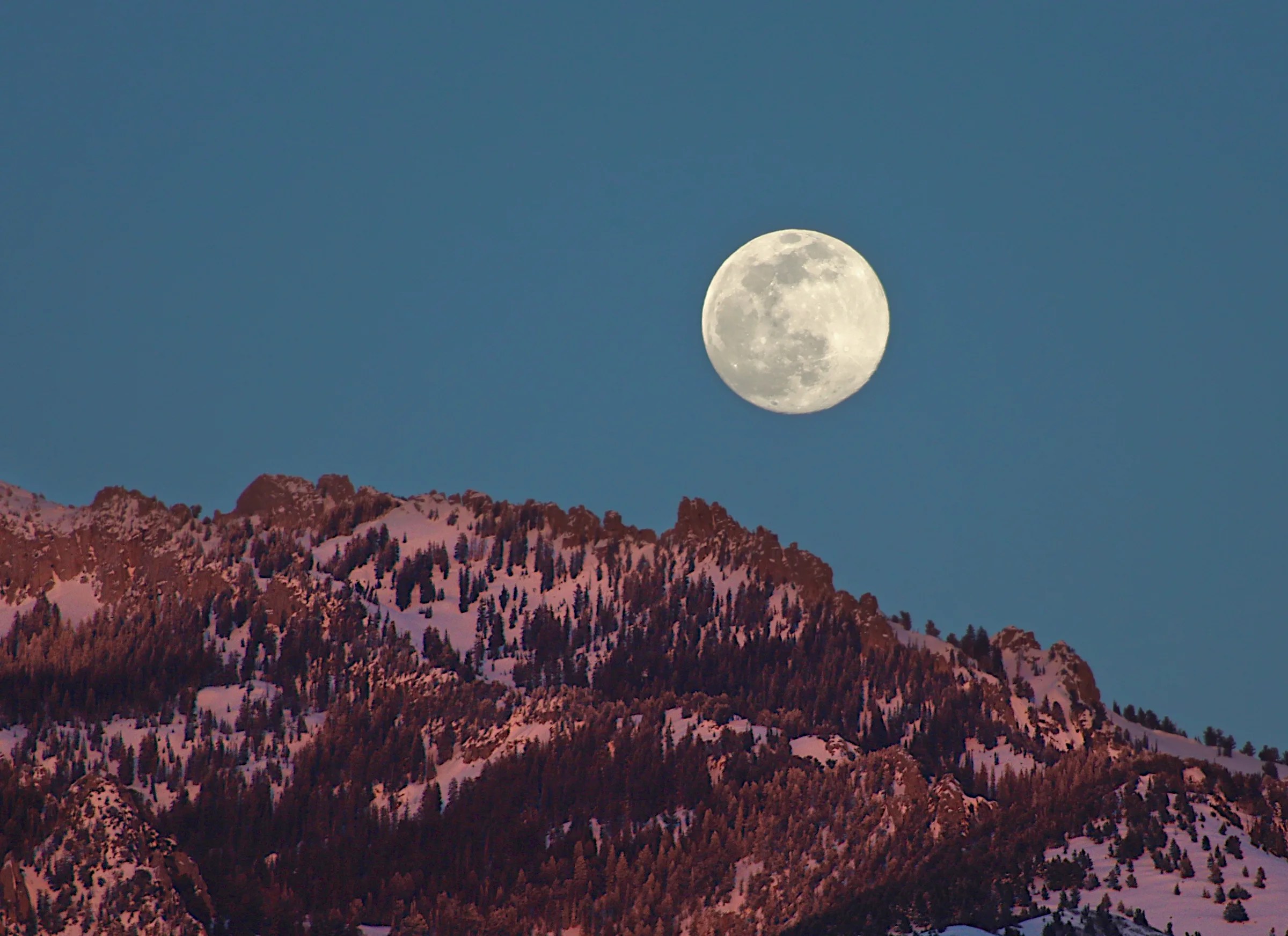
What's Up April 2024
What's Up for April? Some easy-to-spot planets, there's still time to observe comet 12P, and how to enjoy this month's solar eclipse if you're not in the path of totality.
Learn More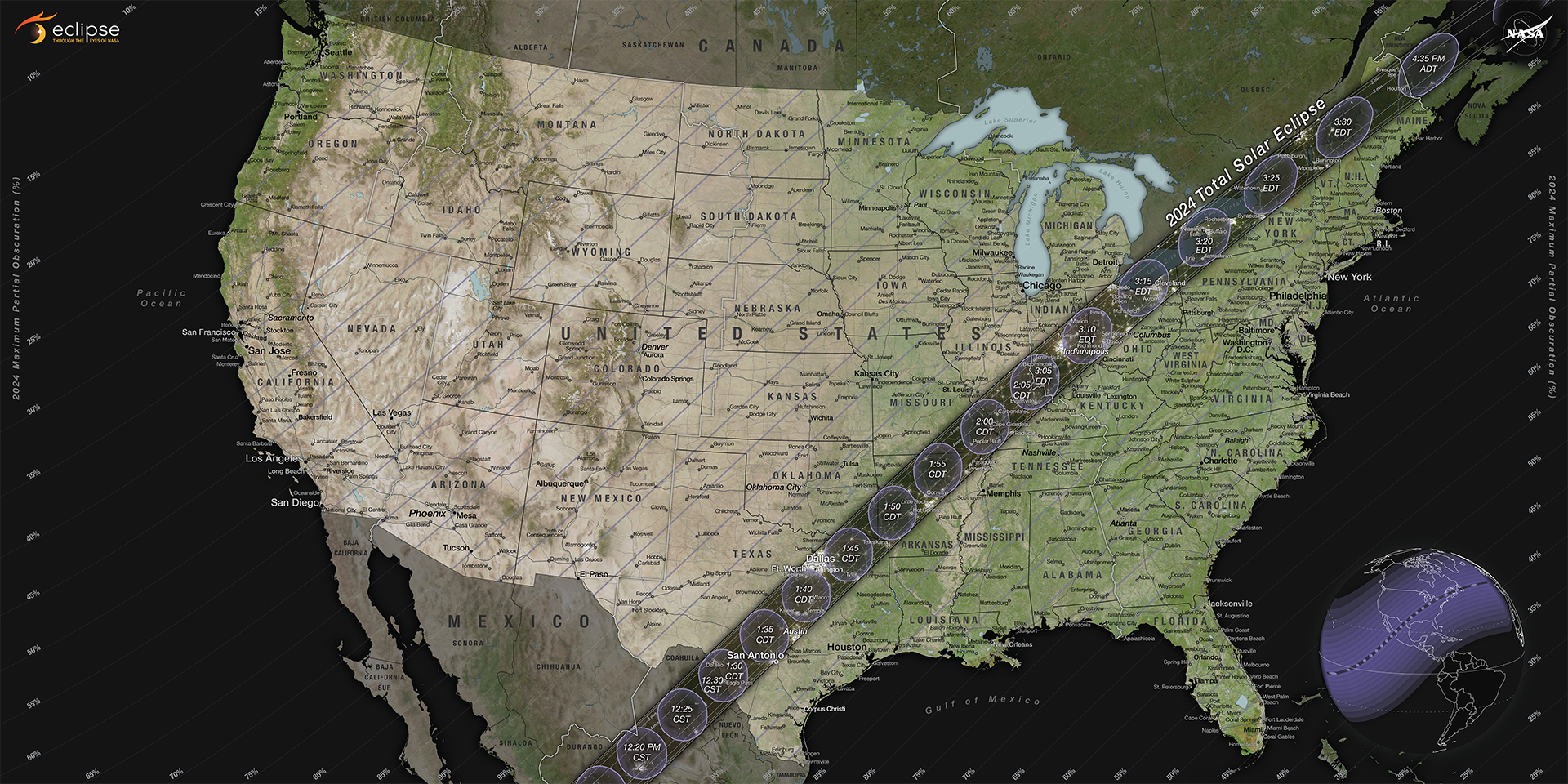
How to Make a Pinhole Camera
You don't need fancy glasses or equipment to enjoy one of the sky's most awesome shows: a solar eclipse. With a few simple supplies, you can make a pinhole camera that lets you watch a solar eclipse safely and easily from anywhere.
Learn More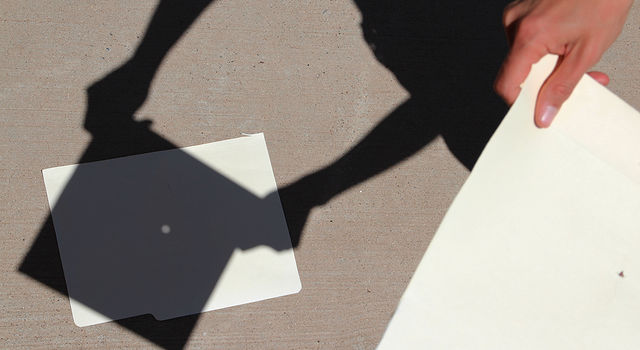
Skywatching Resources from NASA
Daily Skywatching Guide
A list of events, including the phases of the Moon, close pairings of planets in the sky, and upcoming meteor showers.
Learn More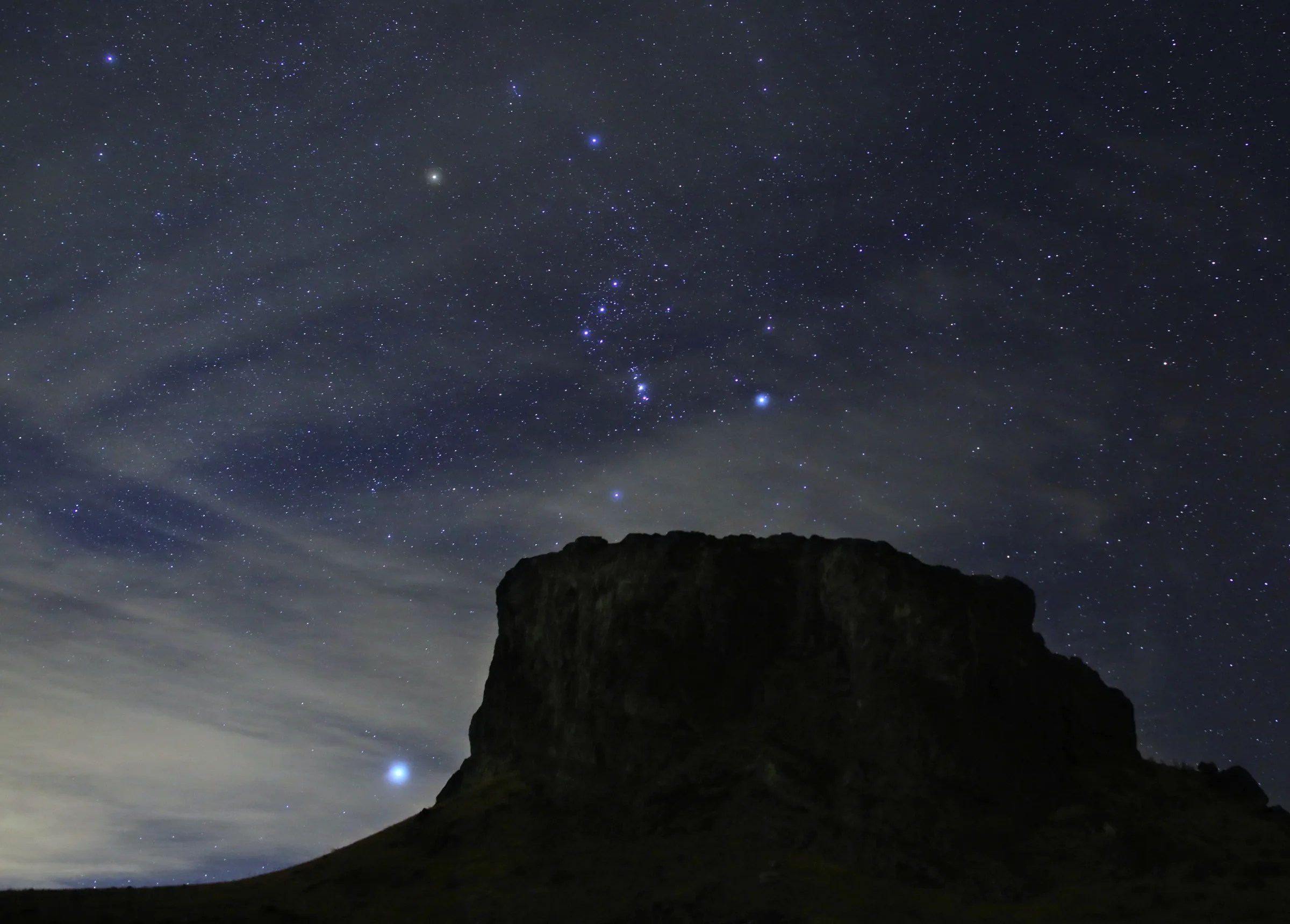
Spot the Station
Find out when and where you can see the International Space Station pass overhead from several thousand worldwide locations
Visit site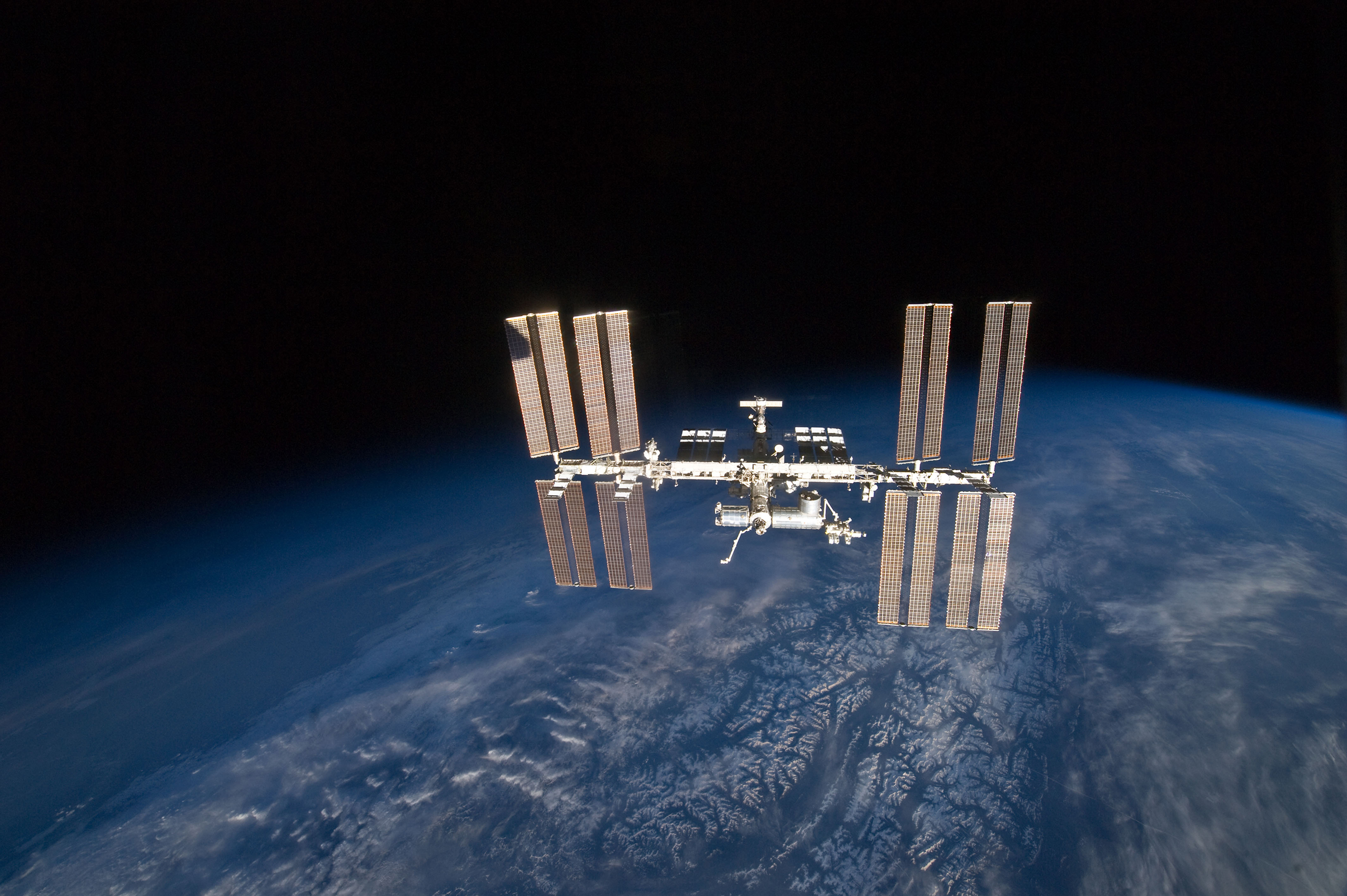
There is so much variety in the sights you can enjoy when skywatching. Many are easily observable with the unaided eye, though a pair of binoculars or a small telescope open up even more possibilities. And because what's up in the sky changes from month to month, there's always something special to experience at any time of year. Here are a few of the most common skywatching sights to check out.
Planets – Five planets in our solar system are easily observed without a telescope: Mercury, Venus, Mars, Jupiter and Saturn. Uranus is just barely visible for those with excellent eyesight under dark-sky conditions, provided you know where to look. The planets appear to move across the sky, against the background of the much more distant stars. Planets appear as bright or brighter than most stars, and unlike stars, they tend to glow with a steady light, where stars often flicker.
Stars – Most of the brightest stars are relatively nearby in space – that is, within a few hundred light years of the solar system. While there are a couple hundred billion stars in our galaxy, the Milky Way, we only see a few thousand of the nearer ones when we look into the night sky with our eyes. Stars are spread all across the canvas of the sky, but they appear denser in places. For example, there are clusters of stars, like the Pleiades, and the region of the sky where the band of the Milky Way appears is much more densely packed. And because our brains are especially good at finding patterns, we also observe groupings of stars that form constellations and asterisms.
The Moon – Earth's Moon is a constantly changing celestial sight, from night to night. It goes through phases each month, waxing as it becomes full, and waning as the full moon shrinks back to a crescent. The Moon's changing illumination causes different features on its surface, like craters and mountain ranges, to appear more prominently as they become highlighted along the day-night dividing line, called the terminator.
> More about the Moon's phases
Meteor showers – Meteors are tiny bits of rock and dust shed by comets and asteroids in debris trails as they orbit our Sun. Every year, at about the same time, our planet passes through the same debris trails, causing the annual named meteor showers. Some of the best known showers, like the Perseids and Geminids, and can wow spectators with dozens of meteors per hour at their peak. Other showers are more tame, and you may only observe a few shooting stars in a couple of hours of staring up at the sky. Showers can be variable from year to year, and the phase of the Moon has a large impact, with a brighter Moon washing out most of the fainter meteors.
Eclipses – There are two main types of eclipses: solar and lunar. Solar eclipses are observed in the daytime when the Moon passes between Earth and the Sun, and covers the Sun from our point of view, either partially or totally. Lunar eclipses are observable when the Moon is above the horizon and Earth passes between the Moon and the Sun, causing our planet's shadow to fall across the Moon's surface. Lunar eclipses can also be partial, where only part of the Moon falls into shadow, or total. Importantly, solar eclipses should never be viewed with unprotected eyes, while lunar eclipses are safe to view with the naked eye.
Comets – Dusty, icy comets hail from the cold depths of the outer solar system, far from the warmth of our Sun. Some, like Comet Halley, are on relatively short orbits of decades to a couple hundred years. Others have orbits that take many thousands of years to circle the Sun. Comets are special, occasional visitors, that don't stick around. They start out faint and distant, requiring a telescope to be seen. But as they come closer to the Sun, they can brighten and form a fuzzy head, called a coma. The most spectacular comets also form long, streamer-like tails.
Galaxies – Our own galaxy, the Milky Way, appears as a band of faint light across the night sky in dark locations away from bright city lights. Our solar system lies within the disk of the spiral-shaped Milky Way, so we are looking at it edge on. Observers in the Southern Hemisphere are able to observe the Large and Small Magellanic Clouds – two dwarf galaxies that orbit the Milky Way. Observers sometimes describe their appearance as being like faint clouds in the night sky. Our nearest large neighbor, the Andromeda galaxy, appears as a faint, fuzzy patch of light in Northern Hemisphere skies. It appears tiny because it's about 3 million light years away, but it's actually about the same size as the Milky Way.
Satellites – Satellites orbiting Earth are easiest to spot around dawn and dusk. From their perspective a couple of hundred miles or more above Earth's surface, they are still bathed in sunlight, while you are sitting in twilight below. Satellites in the night sky can often be distinguished from aircraft as they tend to be fainter than passing airplanes, and unlike aircraft, they don't have beacon lights that blink regularly (though some can brighten suddenly in what's called a flare). Satellites often can be seen to fade in brightness as their orbits carry them into darkness above the planet's night side. Alternately, they can appear from nothing, brightening as they head into day, experiencing an orbital sunrise.
Auroras – Usually a treat enjoyed by those who live at higher latitudes toward the north or south, auroras are dancing curtains of light and color in the sky. They are the result of our planet's magnetic field and atmosphere interacting with those of the Sun. A wind of particles from our local star washes continuously over our planet, and sometimes becomes more intense. Some of those electrically charged particles become trapped in Earth's magnetic force field and get funneled into our upper atmosphere, where they produce glowing light displays as they crash into molecules of gases like oxygen and nitrogen.
Check out the NASA's Eyes on the Solar System Telescope mode! Click anywhere on Earth and then click "GO" in order to land at that location. Click the Big Dipper icon at bottom to turn the constellations on and off, and see what's in the sky right now above that location.
Although telescopes are the most powerful tool for peering deeply into the night sky, a telescope might not necessarily be the best choice for everyone. There are a variety of options for how to observe, and what's right for you depends on such factors as what you want to observe, how much effort you want to put into skywatching, and your budget. Here are some different tools to choose from for observing the skies.
Your own eyes – You don't truly need any special gear to do skywatching. For the majority of people, our own eyes are often the best way to enjoy observing. Your eyes can take in panoramic views of the sky spanning 180 degrees, whereas a telescope shows only a tiny patch of the sky. Some sights are only visible when seen with the naked eye – star patterns like the constellations, lineups of the planets, and the arc of the Milky Way to name a few examples. And meteor showers are best experienced by simply lying down and looking up!
Telescopes – As Galileo found over 400 years ago when he was the first to point one at Jupiter, Venus, and the Moon, telescopes allow you to observe objects in smaller areas of the sky than your eyes alone can resolve. They also have more light gathering power than your eyes, enabling you to see much fainter objects. The bigger the scope, the more light gathering power, and the brighter the image. Telescopes are great for observing the planets, comets, the Moon, and brighter nebulas and galaxies. And much more of the sky's splendor becomes available to those who attach digital cameras or imagers.
Telescopes come in a huge variety of sizes and configurations – from fully automated, desktop-sized, point and click models you control with an app, to large, open-frame scopes you can build yourself. They can be fully manual in operation – where you point them where you like using your hands – or driven by motorized mounts with computerized tracking systems.
As you might imagine, telescopes are available at a wide range of prices. But note that you don't have to spend large sums of money to access one. There is a thriving market for used telescope gear, which generally means lower cost. And most local astronomy clubs, along with many observatories and university astronomy departments, offer public observing nights, where telescopes are set up by knowledgeable observers for the public to look through. There are even options to observe online using remotely operated telescopes.
Binoculars & Spotting Scopes – Often the answer to the question, "What is the best telescope for a beginning observer?" is "A pair of binoculars." Perhaps their greatest advantage is their portability and ease of use, in addition to their generally lower pricetag, compared to telescopes. They come in a similar spectrum of sizes and cost.
Binoculars will show you a wider area of sky than a telescope, which can be an advantage when observing objects like comets and close pairings of the planets with the Moon. They easily reveal sights like star clusters, double stars, and the four largest moons of Jupiter, along with stars too faint to see with your eyes alone.
Binoculars can be handheld, but they are a much more useful tool when stably mounted on a tripod. (They tend to be more enjoyable to use when mounted, as well!) As the main control mechanism is simply to focus them, binoculars tend to be easier to use than all but the simplest telescopes.
An even easier option is a spotting scope, or monocular. Often used for birding and hunting, spotting scopes are as portable as binoculars, but they remove the need to adjust the two eyepieces to get a clear view.
Cameras – Digital cameras are capable of capturing incredible views of the night sky, as they can take long exposures that capture light from faint sources, including dim stars and the Milky Way itself. Night sky photography can be an expensive hobby, but it doesn't have to be. The essentials are just a digital camera, a lens that can open up to a wide aperture to collect more light, and a tripod for stability. (With lenses, look for ones with an aperture or "f number" of at least f/3.5. Numbers even lower, like f/1.8, are best, because they mean more light collecting ability!) Even the cameras in some smartphones are able to take decent night sky photos when placed on a stable surface or tripod.
The main point to remember is that you can start skywatching, tonight, with your eyes alone, and still observe some really interesting sights. The various tools available are just that – options to add to the experience. If you decide you're ready to try scopes or cameras, remember you can start small and simple, and work your way to greater complexity as your interest deepens. And of course, if you're more into armchair observing, NASA has tons of dazzling images from space telescopes and solar system exploration missions to marvel at.
An important part of NASA's mission is to explore – to go, to discover, and to learn – for the good of all. The agency's science missions extend our human senses deep into space, from Earth's Moon to planet Mars, from our star to distant stars and galaxies, from our own planet to exoplanets orbiting other suns. NASA's fleet of scientific exploration missions bring the cosmos closer by collecting images and other data to show us distant wonders in the sky like we could never see from Earth's surface. And with missions that explore the Sun and its family of planets and other small worlds, we actually take you there.
While stargazing and marveling at the beauty of the night sky is an ancient activity, it's only in the past few centuries that humans have had an opportunity to understand what they are looking at in the heavens above. And since its founding in 1958, NASA has endeavored to contribute to that shared understanding of our planet's place in the universe, through our scientific exploration.
For example, today we know Mars not just as a wandering, reddish point of light, but as a living world with a complex history, thanks in part to the many spacecraft NASA has sent to explore the Red Planet. We now know that most stars in the sky have systems of planets, with thousands of these exoplanets being added to the known worlds, in part thanks to NASA's exoplanet research. And with NASA's space telescopes, scientists have peered into the hearts of distant nebulas to reveal the stellar nurseries where baby stars are born.
NASA's skywatching resources are shared in that same spirit of exploration. We recognize that there's an explorer in each of us, and we want you to remember that the wonders of space are not something separate from our everyday lives – the universe is right above our heads, and beneath our feet. Through our skywatching resources, we hope to help you feel more connected to the astounding wonders that we're exploring in the larger world beyond Earth. And we hope that gazing at the stars above leads you to a more personal connection with our scientific quest to understand our place in the cosmos.
Q: What is skywatching?
Skywatching refers to observing the ever-changing variety of sights in the sky, at night in particular, but also in the day. Skywatching can be as casual as enjoying a couple of minutes of stargazing, and as serious as using a telescope to take images of deep sky objects. When you notice the changing position and phases of the Moon over a few days, or you search for Jupiter or Venus in the twilight sky, or you notice a constellation like Orion is visible for the first time in a few months, you're skywatching. At its heart, skywatching is an activity anyone can engage in to feel more connected to the larger world beyond planet Earth.
Q: What tools do I need to start skywatching?
You don't need any special equipment to get started skywatching. Online resources like this page are a great place to learn about what you can see. An app on your smartphone or computer can be a great help to discover what sights are visible tonight, and where to find them in the sky once you're outside under the stars. If you have access to binoculars or a telescope, they will extend your vision and enhance the experience – but they are by no means necessary to get started.
Q: How do I find a good location for skywatching or stargazing?
The number one priority when seeking an excellent location for skywatching is to get away from bright city lights. Scattered light from urban areas creates light pollution that washes out the fainter stars and the Milky Way. Wide open areas without lots of tall trees or mountains nearby make for good viewing spots, since you can see more of the sky. Examples include places like a large field, a wide valley, and the shore of a lake or the ocean. Any location you select should be a place where you can feel safe at night.
Q: What can I see in the night sky?
The whole universe is accessible to skywatchers. Your own eyes will show you stars, a handful of bright planets, the Moon, comets and meteors (shooting stars), to name a few sights. Binoculars or a small telescope enable you to see finer details than your eyes can detect, making visible things like the large moons of Jupiter and the rings of Saturn, as well as star clusters and double stars. A larger telescope enables you to see fainter objects, like nebulas and other galaxies.
Q: How does light pollution affect skywatching?
Light pollution is stray light from parking lots, sport complexes, street lights, and other human activity, scattered into the night sky. It's a combined effect of scattered light from these things that manifests as a glow in the night sky that makes it difficult to observe fainter stars and the Milky Way. The larger and more developed a city is, the more light pollution it tends to produce. The effect decreases the farther away you travel from a city. Heading out to less developed areas, away from town, will enable you to see more stars.
Q: How can I involve my children in skywatching?
Parents can prepare to involve their children in skywatching by learning some of the basics, like the phases of the Moon, the names of a few easy to recognize constellations, and knowing how to identify bright stars and planets using a favorite astronomy app. Staying up to date with the month's skywatching highlights, with resources like NASA's What's Up video series, makes it easy to know what there is to observe, and provides some fun facts to share when out under the stars. If you don't have easy access to a safe place for the family to stargaze, most local astronomy clubs host public viewing nights, where children can enjoy telescope views of the sky's wonders.
NASA's Space Place also offers skywatching resources for kids, including these articles:
Q: Where can I find more NASA resources about skywatching?
NASA provides a variety of skywatching resources to help you make a personal connection with the amazing place we study and explore. These include:

